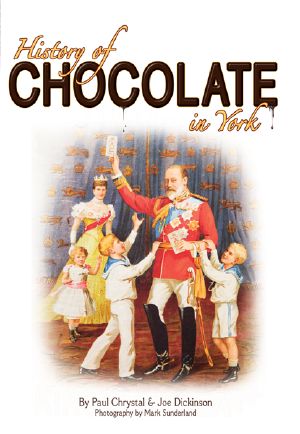A History of Chocolate in York

- Authors
- Chrystal, Paul
- Publisher
- Remember When
- Tags
- cooking , history
- ISBN
- 9781844681235
- Date
- 2012-02-01T00:00:00+00:00
- Size
- 39.99 MB
- Lang
- en
Think of York and you think of its Minster, mediaeval streets, the railways - and of confectionery, particularly chocolate. Kit Kat, Fruit Gums, All Gold, Butterkist have all been as much a part of British life as the York companies that made them: Rowntree's, Terry's and Craven's.
This new book is the first to chart the history of chocolate and confectionery manufacture and marketing by York companies, from their origins in the eighteenth century, through to the recent takeovers by Nestlé, Tangerine and Kraft.
Revolutionary new products such as Easter eggs in the 1870s and chocolate assortments in the 1890s are covered along with such crucial turn of the century developments as milk chocolate and the chocolate bar. The significance to the industry of the Quaker movement is discussed along with an examination of the impact of the world wars and the intervening depression.
The book is fully illustrated throughout, depicting all aspects of production, quality control, distribution and marketing: the packaging, design and branding developed by the companies broke new ground in branding and became an art form in itself with iconic images that still resonate today.
Think of York and you think of its Minster, mediaeval streets, the railways - and of confectionery, particularly chocolate. Kit Kat, Fruit Gums, All Gold, Butterkist have all been as much a part of British life as the York companies that made them: Rowntree’s, Terry’s and Craven’s.
This new book is the first to chart the history of chocolate and confectionery manufacture and marketing by York companies, from their origins in the eighteenth century, through to the recent takeovers by Nestlé, Tangerine and Kraft.
Revolutionary new products such as Easter eggs in the 1870s and chocolate assortments in the 1890s are covered along with such crucial turn of the century developments as milk chocolate and the chocolate bar. The significance to the industry of the Quaker movement is discussed along with an examination of the impact of the world wars and the intervening depression.
The book is fully illustrated throughout, depicting all aspects of production, quality control, distribution and marketing: the packaging, design and branding developed by the companies broke new ground in branding and became an art form in itself with iconic images that still resonate today.
The book is intended for anyone interested in social history and the history of the food industry in Britain, the Quaker movement and social reform and manufacturing and marketing history; residents of and visitors to York will find in the book a fascinating glimpse of an integral part of York’s past, present and future.